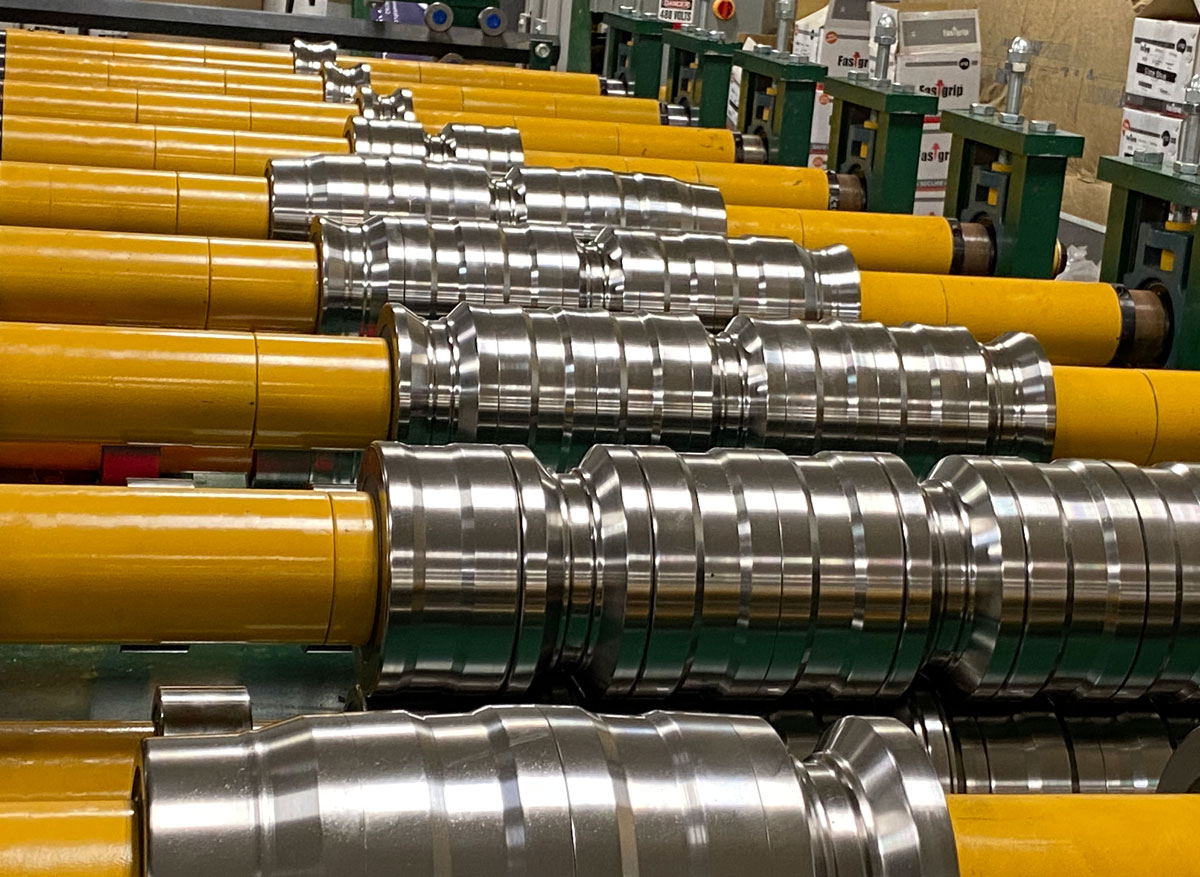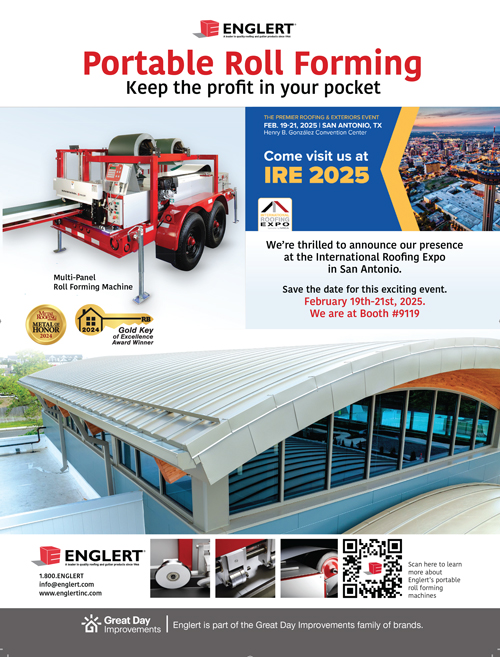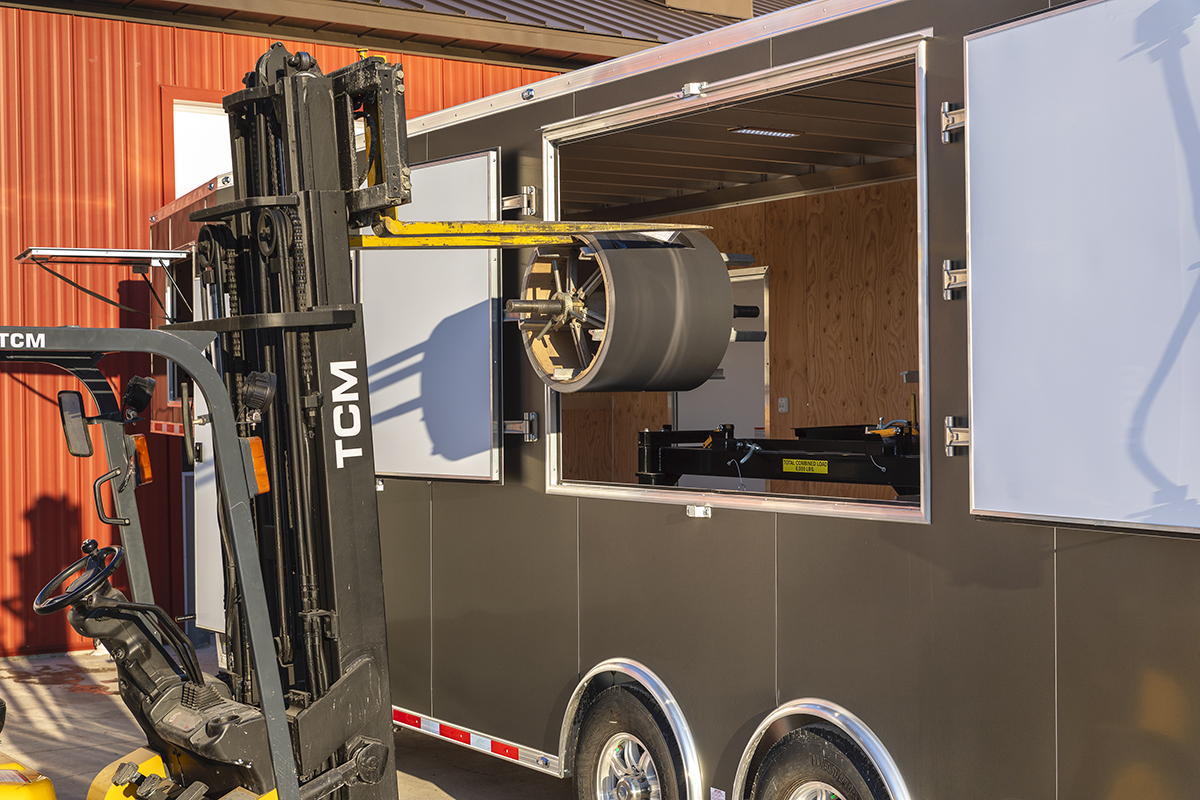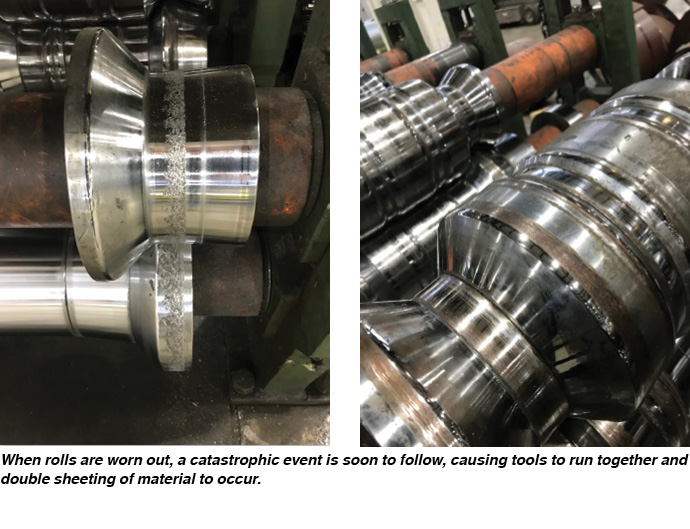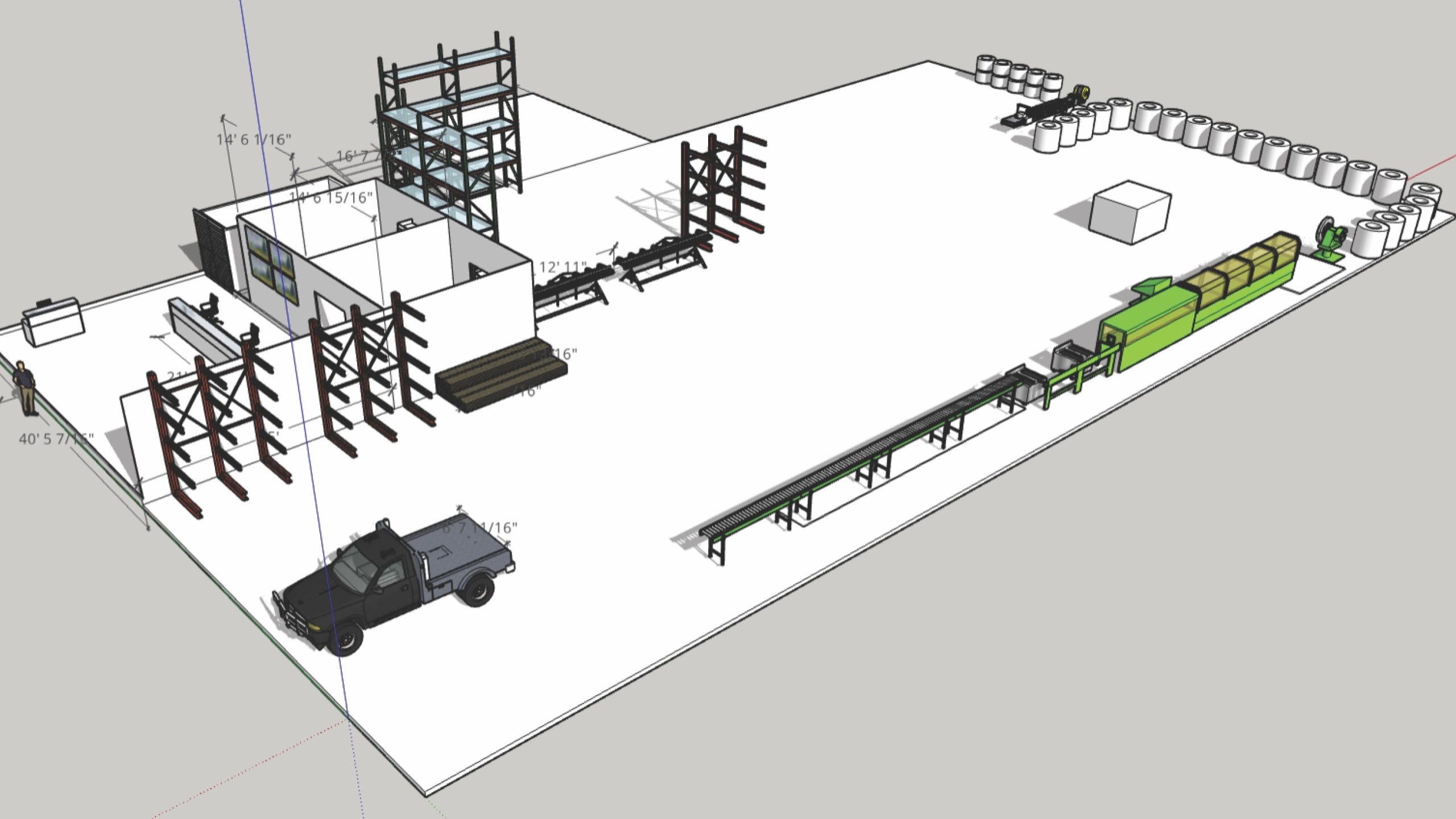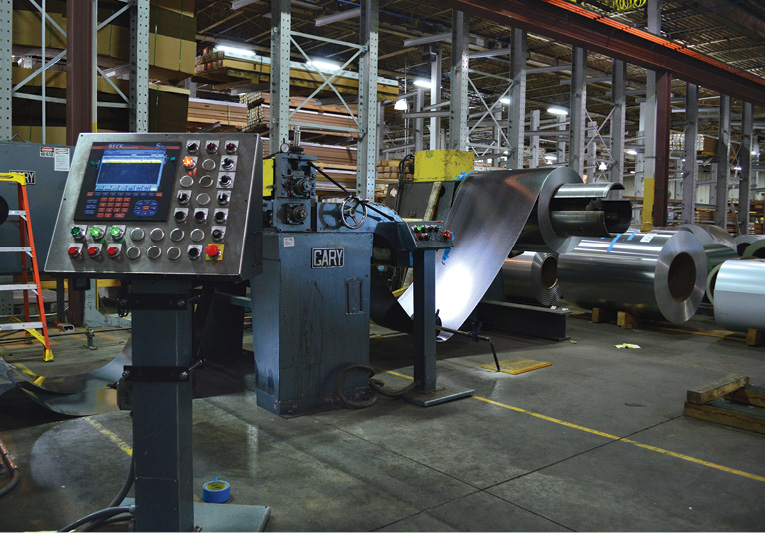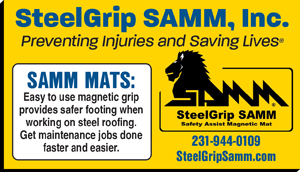Roll forming equipment represents one the largest capital investments — if not THE largest investment — of a metal-forming shop. To maximize the return on that investment, and keep it running smoothly and effectively, regular and thorough cleaning are on the list of best practices.
During the roll forming process, materials like oils, dirt, dust, metal shavings, and adhesives can accumulate on machine components. Cleaning helps prevent the buildup of contaminants that could compromise the quality of the formed products and lead to operational issues. Within this article are a few tips for cleaning and basic preventive maintenance, but by no stretch of the imagination is it a comprehensive guide.
Top Priority: Tooling
Clean tooling and forming surfaces play a part in consistent product quality; keeping equipment clear of waste materials such as excess lubricants, metal filings, and other debris can affect the precision of the machine and the quality of the finished product. “Regardless of what brand of machine you have, or whether it’s mechanical, hydraulic, or electric,” says Wayne Troyer of Acu-Form Equipment, “if you want to put out a good quality product, you have to keep your machines clean. Number one is keeping all the dies clean.” The dies are in direct contact with the coil as it runs through the machine, so if they are not in top condition they can cause condition problems with the panels and premature parts wear on the machine. “There are corners and small grooves that dirt can get into. People clean the dies but often forget to clean the small detailed areas,” he continues.
“Tooling is priority #1,” emphasizes Frank Schiene, Metal Rollforming Systems. “You need to keep your tooling as clean as possible because it creates the product going out the door for the customer. “If you don’t check your tooling you could have things that come loose and shift, resulting in crashing dies that will ruin the panels,” cautions Frank. “If tooling isn’t checked or cleaned, it affects the overall quality of your panels.”
Non-flammable, solvent-based cleaners may be effective for removing grease, oil, adhesive build-up, and debris, but always make sure cleaners are approved by the machine manufacturer and compatible with the machine’s components. Wayne says Scotch Brite pads are a popular choice to clean the dies; they’re abrasive enough to remove grime but not hard enough to cause damage. Use soft brushes and cloth to clean intricate parts of the tooling and mild detergents or cleaners for general cleaning, always making sure the cleaners are compatible for the specific materials and finishes of the machine components. After cleaning, reapply the lubricants following manufacturer recommendations for lubricant types and application.
The frequency that cleaning is needed will depend on factors like machine usage, environmental conditions, and the types of materials used during the forming process. “Materials like Dripstop and CondenStop are very good products,” says Wayne. “But people need to pay attention when they’re putting the product onto the panel. It sticks to the panel but can also stick to the dies. And the longer you leave that on, the harder it is to get off. If built up on the dies, it creates friction and overbends where it’s not supposed to. It can be very inconvenient for the metal shop in the long run if they don’t take the time to clean it off after they’re done with the run.
“Any place your finished product touches should be clean,” he continues. “Make sure the surfaces are clean where you put your finished product. Wipe down everything. The frequency depends a lot on the shop. There are shops where every evening they’ll clean up. As far as wiping down machines and dies, it depends on your volume. It depends how your shop is situated and where it’s located. If the drives are blacktop or concrete, there’s very little dust. If the shop has gravel drives, especially in the summertime when doors are open, there’s a lot of dust coming into the shop. If that’s the case, then you might have to do it daily. Or you might have to do it once a week.”
Another factor that affects the frequency that cleaning is needed is whether the shop is insulated and if the environment is controlled. “If it’s not insulated and it gets cold and warm and you get a lot of condensation, then dust and anything like that is more likely to stick to everything than if it’s insulated and heated.”
There are additional benefits to maintaining a clean shop. “Everyone likes to work in a clean environment. And if everything’s clean, the customers are going to be more impressed with a clean, well-kept shop than with one that’s not — and they may be more likely to buy from the well-kept shop,” he surmises.
Preventive Maintenance Basics
Regular cleaning is an opportunity for a visual inspection of the machine’s moving parts. This allows early detection of signs of wear, damage, or other issues that could require attention. Identifying problems early can prevent more extensive damage and unplanned downtime.
Chains are constantly moving. If not maintained properly, they can cause a lot of damage. “Chain tension can be a key element,” Frank explains. If not properly tensioned they can “hurt a lot of parts. Proper tension prevents premature wear on an extended list of parts. If it’s too tight, it causes undue stress. Most important with chains, though, people let them get too loose; chains slapping keyways and sprockets can tear up ends of shafts and things like that. It can cause premature sprocket wear, keyway wear, shaft wear. Parts will need to be replaced prematurely, and that may not be needed if proper chain tension was established and maintained.”
Almost everyone uses hydraulics. There are a couple guidelines that users should follow to keep them running trouble-free. “A lot of people use different kinds of fluid and some may not work as well. Follow the manufacturer specifications and change the fluid based on manufacturer specifications, too. On MRS machines, it’s usually once a year, but that may not be the case depending on how much you run.”
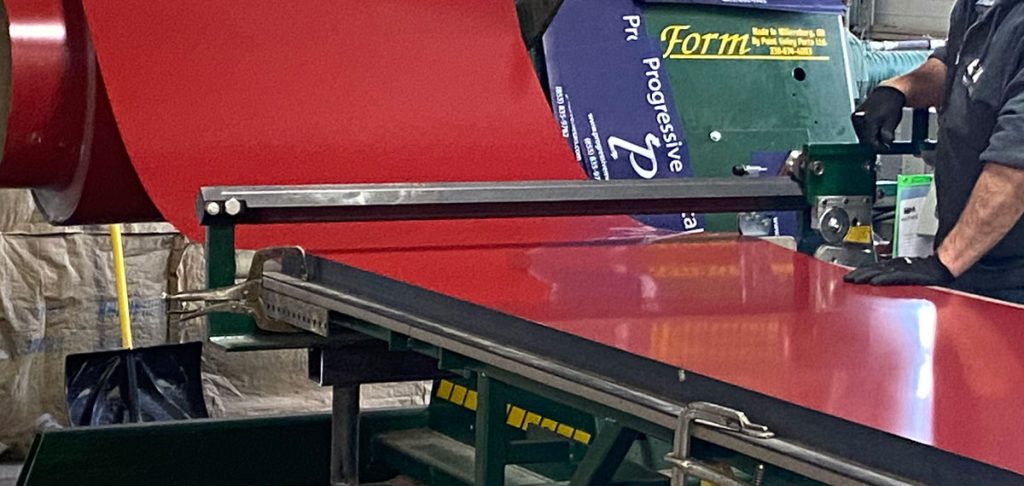
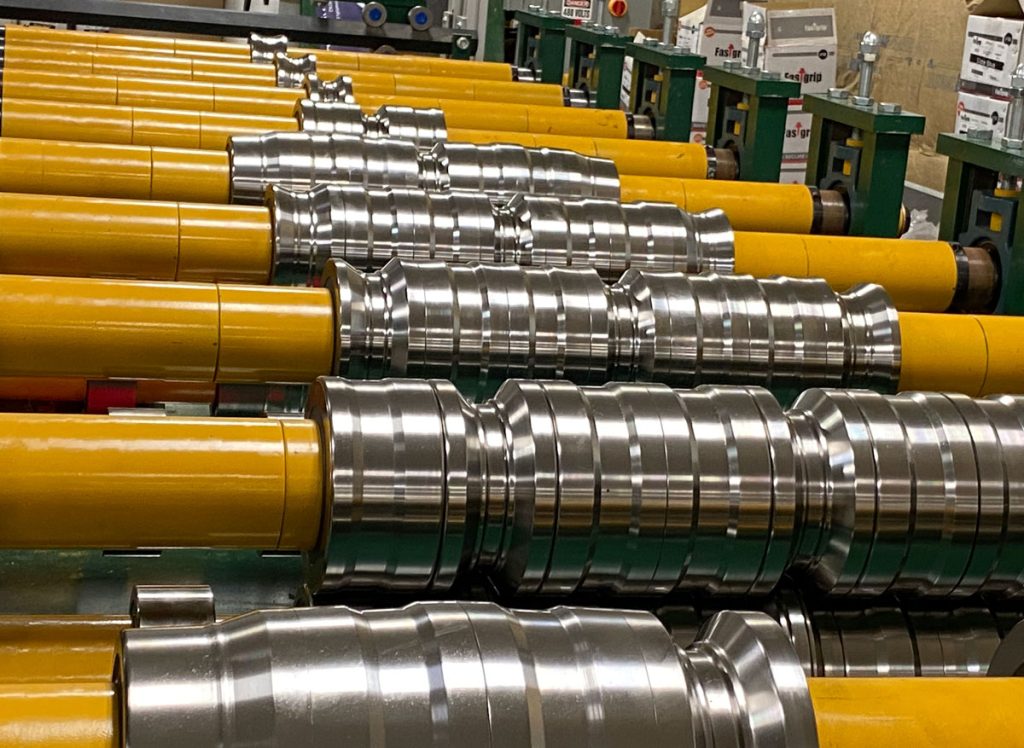
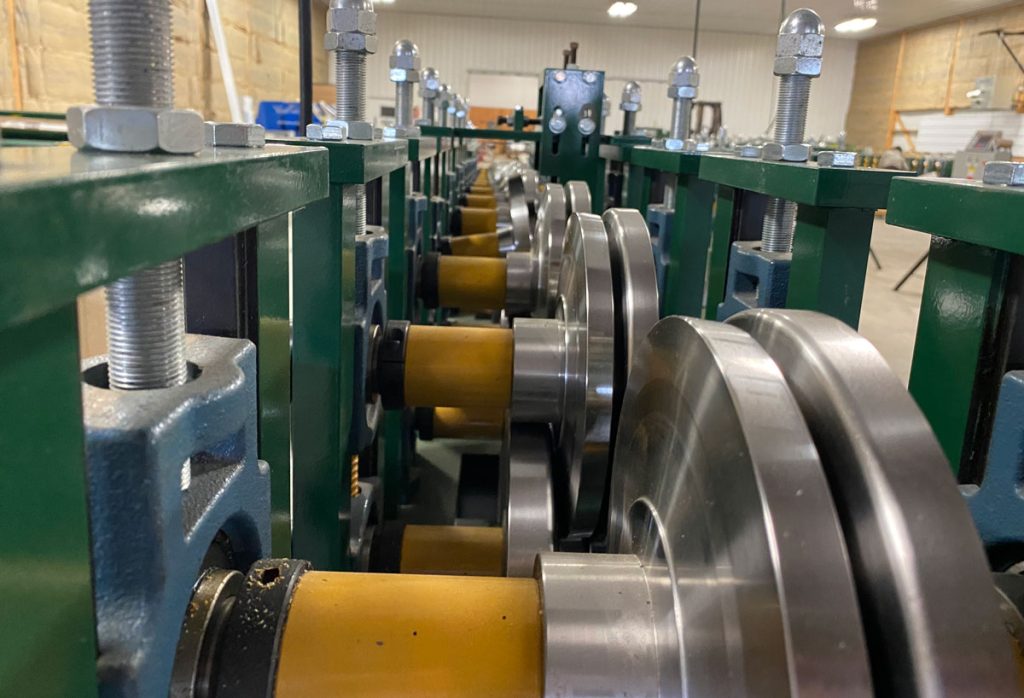
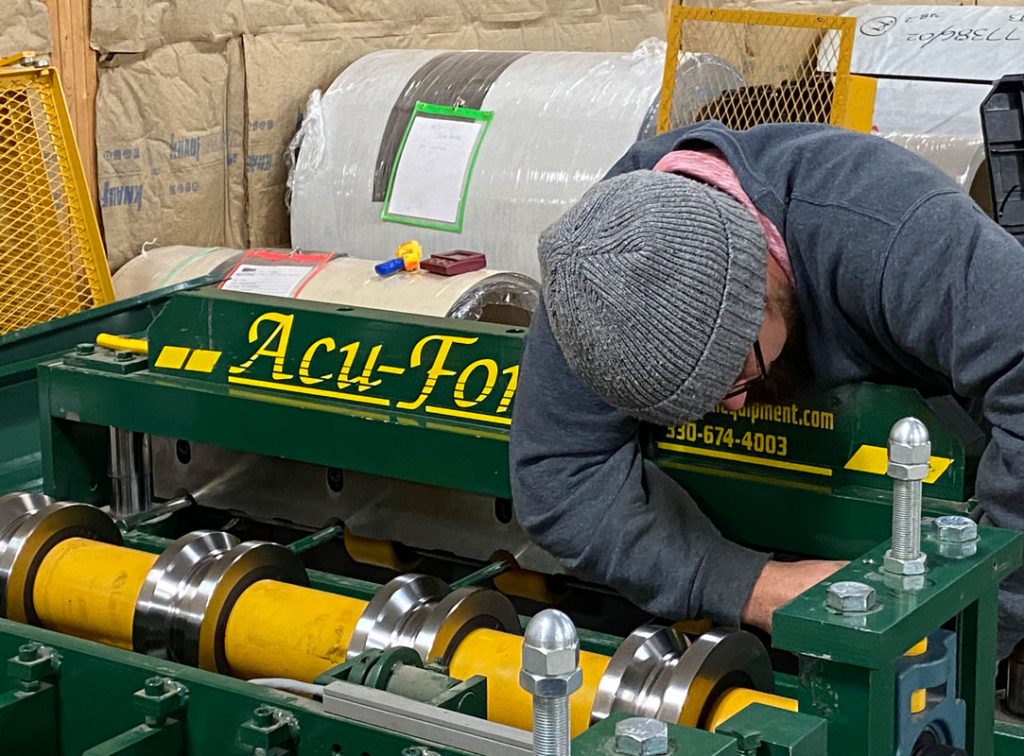
A Metal Construction Association (MCA) whitepaper advises, “A well-maintained machine can last decades and extending the machine life may be as simple as ensuring that the hydraulic oil and/or the motor gearbox oil is clean and within the specified lifespan for the oil. This is probably the most common maintenance issue, because ‘out of sight is far too often out of mind.’ The typical hydraulic oil temperature range is in the area of 120°F. Always check the OEM manual for a specific recommendation for the active temperature range. When the oil temperature is out of range it is important to stop operation and determine the cause for this elevated temperature that could at the very least have an impact on the material being produced and at worst damage the metal-forming equipment.”1
Each machine is different and needs to have a separate preventive maintenance checklist/schedule, but Frank suggests the following, with the caveat that “based on the manufacturer, there may be additional preventive maintenance to do daily”:
Daily: Check tooling
Weekly: Check chain tension
Monthly: Check bearings
Annually: Fluid changes (hydraulics and gear box oil).
“If you follow those,” he advises, “usually things will last longer.”
There’s enough demand for preventive maintenance service that Acu-Form has developed service routes; customers can pay for the manufacturer to come out and do annual PMs. “The service routes involve cleaning dies for people. Changing blades, checking oil and gear boxes and checking to make sure everything is running properly,” explains Wayne. “Customers may want us to do it once a year.”
Don’t Forget the Shears
Machines that have post-cut shears need to be kept properly lubricated to ensure clean cuts and maintain the life expectancy of the shear blades. If not properly lubricated, shear blade life will be shortened and cuts will be more jagged.
Safety Always!
“If you’re doing maintenance you should never be in a hurry,” cautions Frank, who is an integral part of the safety efforts at Metal Rollforming Systems. “Hurry gets you in trouble. You cut corners and do things wrong when you get in a hurry.” Before starting the cleaning process on any metal-forming machine, make sure it’s powered off and isolated; disconnect the power sources and follow lockout/tagout procedures to prevent accidental activation.
“When you clean the machine, always make sure it is locked out,” cautions Wayne. “Never put your hand in the machine to try to clean it while it’s running.” Without exception, proper lockout/tagout procedures prevent accidents. Frank says that while he sees accidents involving new guys, “it’s usually the guy that gets complacent. New guys are a little bit more nervous. If you get complacent, then it’s literally a matter of time before it becomes a bad day and someone has a career-changing or life-altering accident.” Devastating injuries can happen when cleaning dies with the machine running (and folders claim a lot of fingers).
“A lot of the accidents I’ve seen, most of them were avoidable. Do the things that give you a chance of staying safe,” he warns. “Poor choices usually cause more accidents.”
Conclusion
Cleaning equipment is an important step in preventive maintenance; it will help ensure its longevity and performance. There are benefits to establishing a cleaning and preventive maintenance schedule. According to the MCA, “A study conducted by RWC Production Support Services Inc. came to the conclusion that, ‘Many studies suggest that consistent PM can result in a 5 to 10 percent productivity improvement, which can reduce costs by up to 20 percent.’”(ibid.)
And the operator is your first line of defense. “No one spends more time in front of the machine than the operator who can see, or sometimes even sense, minor operational changes in the equipment. Many times, issues slowly arise, and an observant operator can help catch an issue when it still is an easy fix rather than requiring a major overhaul. Operators should be trained to pay attention and document gradual changes such as hydraulic oil color over time.” (ibid.)
Maintaining records of cleaning and preventive maintenance activities can also help identify patterns or recurring issues. “With proper training, maintenance can become a routine, very easy way to keep machines up,” Frank recommends. Regular and thorough cleaning, in addition to proper lubrication and maintenance, contributes to the overall performance and reliability of metal forming machines. RF
1 “Best Practices – General Maintenance on Factory Metal Forming Equipment,” Metal Construction Association, www.metalconstruction.org, March 2022.

